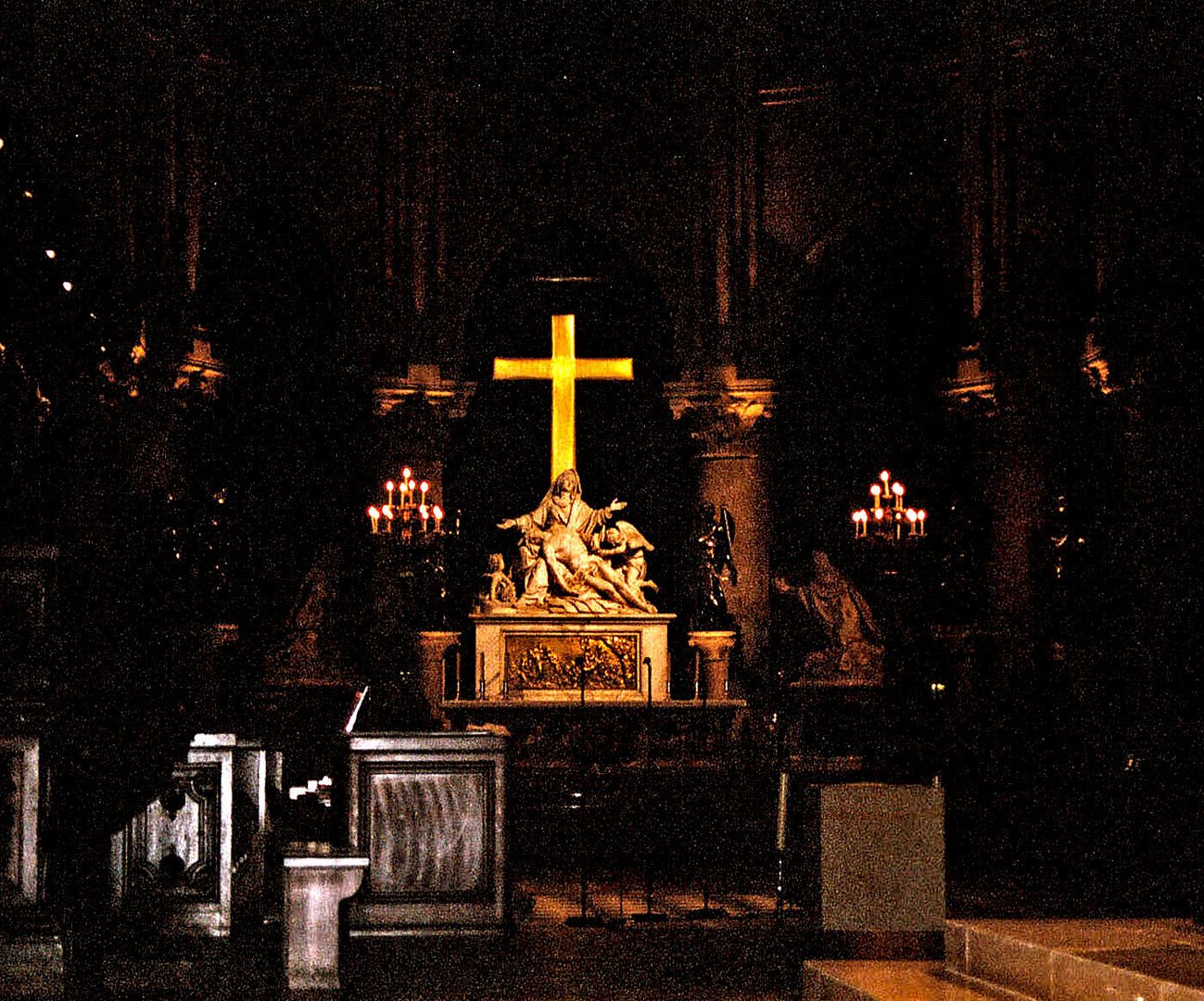Notre-Dame de Paris Altar
Notre-Dame de Paris Altar
Notre-Dame de Paris ("Our Lady of Paris"), also known as Notre-Dame Cathedral or simply Notre-Dame, is an historic Catholic cathedral on the eastern half of the Île de la Cité in the fourth arrondissement of Paris, France. The cathedral is widely considered to be one of the finest examples of French Gothic architecture and among the largest and most well-known church buildings in the world. The naturalism of its sculptures and stained glass are in contrast with earlier Romanesque architecture.
As the cathedral of the Archdiocese of Paris, Notre-Dame is the parish that contains the cathedra, or official chair, of the archbishop of Paris, currently Archbishop André Vingt-Trois. The cathedral treasury is notable for its reliquary which houses some of Catholicism's most important first-class relics including the purported Crown of Thorns, a fragment of the True Cross, and one of the Holy Nails. In the 1790s, Notre-Dame suffered desecration during the radical phase of the French Revolution when much of its religious imagery was damaged or destroyed. An extensive restoration supervised by Eugène Viollet-le-Duc began in 1845. A project of further restoration and maintenance began in 1991.
Notre-Dame de Paris was among the first buildings in the world to use the flying buttress (arched exterior supports). The building was not originally designed to include the flying buttresses around the choir and nave but after the construction began, the thinner walls (popularized in the Gothic style) grew ever higher and stress fractures began to occur as the walls pushed outward. In response, the cathedral's architects built supports around the outside walls, and later additions continued the pattern. Many small individually crafted statues were placed around the outside to serve as column supports and water spouts. Among these are the famous gargoyles, designed for water run-off, and chimeras. The statues were originally colored as was most of the exterior. The paint has worn off, but the grey stone was once covered with vivid colors. The cathedral was essentially complete by 1345. The cathedral has a narrow climb of 387 steps at the top of several spiral staircases; along the climb it is possible to view its most famous bell and its gargoyles in close quarters, as well as having a spectacular view across Paris when reaching the top.
The cathedral church houses the cathedra, the bishop’s throne chair, a sign of the status and power of the pastor of the individual church as well as a sign of the believers’ unified faith as preached by the bishop, the pastor of the flock. This church is where the bishop presides over liturgy on the most solemn days.
The cathedral church’s majestic construction evokes the spiritual temple built within believers’ souls. It shines with the magnificence divine grace, as Saint Paul said, “You are the temple of God.” Finally, the cathedral should be seen as a figure of the Church that is visible to Christ who, here below, sends God his supplication, praise and adoration; an image of the mystical body whose members are brought together by charity, charity that nourishes grace.
http://www.notredamedeparis.fr/-English-
http://en.wikipedia.org/wiki/Notre_Dame_de_Paris










Commenti 0
Cancella commento
Eliminare commento e risposte